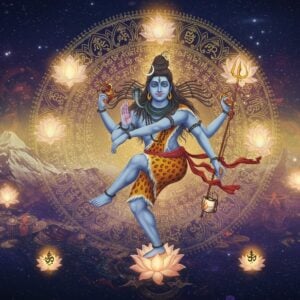
Delve into the captivating world of Artha Alankar, the art of figurative expression in Sanskrit literature. This ancient practice adds layers of meaning and emotional depth to texts, using figures of speech to create vivid imagery and enhance the reader’s experience. From classical poetry to philosophical discourse, Artha Alankar has shaped the way stories are told and ideas are conveyed in Sanskrit, influencing even modern literary forms.
Definition and Importance of Artha Alankar
Understanding Artha Alankar
Artha Alankar refers to the skillful use of figures of speech to enhance the beauty and impact of Sanskrit literature. It is a powerful tool that elevates ordinary language into an art form, enabling writers and poets to convey deeper meanings and evoke strong emotions. This tradition not only enriches the aesthetic quality of texts but also preserves the richness and complexity of the Sanskrit language, fostering a profound connection between the reader and the literary work. It acts as a bridge between literal and symbolic interpretation, adding layers of meaning and encouraging thoughtful engagement. This intricate interplay between sound and sense deepens the reader’s understanding and appreciation of the text’s cultural and spiritual context.
Key Types of Artha Alankar – Artha Alankar ke Bhed
In Sanskrit literature, Artha Alankar is essential for creating expressive and engaging texts. It brings words to life with vivid imagery and evokes powerful emotions. Let’s explore some key types:
Upama (Simile)
Upama, or simile, draws parallels between two distinct elements using words like “like” or “as.” This comparison creates a clear image in the reader’s mind, making the text more relatable. For example, “The warrior fought like a lion,” instantly evokes an image of fierceness and courage.
Rupaka (Metaphor)
Rupaka, known as a metaphor, is a more direct comparison than a simile. It asserts that one thing is another, deepening the connection between two seemingly unrelated concepts. For example, stating “Knowledge is light” directly equates knowledge with illumination, highlighting its power to dispel ignorance.
Vakrokti (Irony)
Vakrokti, or irony, uses words to express the opposite of their literal meaning, creating a layer of subtle humor or sarcasm. This figure of speech adds complexity to the text, requiring the reader to discern the intended meaning beyond the surface level. For example, praising someone’s clumsiness after they trip is a form of Vakrokti. Explore Krishna’s flute, a symbol of divinity and devotion.
Importance of Figures of Speech
Figures of speech like Upama and Rupaka have been integral to Sanskrit literature since its early stages. They allow poets and writers to express intricate ideas with elegance and simplicity. These figures of speech bridge the gap between literal and symbolic interpretation, fostering nuanced storytelling and philosophical discourse. They enrich the aesthetic appeal and emotional resonance of texts, reflecting the cultural and spiritual ethos of ancient India. This enhances engagement and allows readers to connect with the text on a deeper level.
Poojn.in also supports the worship of Hindu deities and the understanding of devotional practices. Find resources on creating a Krishna altar on poojn.in. Learn how to set up a Krishna altar in your home.
Flexibility Across Genres
Artha Alankar’s versatility makes it adaptable to diverse literary genres, from epic poems like the Mahabharata to lyrical works and even prose. Its flexibility allows it to seamlessly integrate into various styles, enhancing the text’s overall impact. Whether conveying complex emotions or exploring profound philosophical concepts, Artha Alankar provides a nuanced means of expression.
By understanding these figures of speech, readers can unlock the richness and depth of Sanskrit literature. They can appreciate the artistry that continues to influence modern writing. Immerse yourself in the devotion and love of Krishna bhajans.
How Poojn.in Supports Your Sanskrit Ritual Needs
Poojn.in offers a wide selection of items for Sanskrit rituals and ceremonies, catering to your specific needs. As India’s leading provider of spiritual and religious goods, we provide:
- Complete Sanskrit puja samagri kits: Containing all the essential items for your rituals, conveniently packaged together.
- High-quality copper and brass vessels: Crafted with care for ritual use, ensuring purity and authenticity. Discover our collection of brass Laddu Gopal murtis.
- Traditional diya and agarbatti stands: Enhance the ambiance of your sacred space with beautifully crafted stands.
- Pure ghee and other ritual offerings: Sourced with utmost care to ensure quality and purity for your offerings. Find premium sandalwood agarbatti for your puja.
- Sacred threads and ritual clothing: Maintain the sanctity of your rituals with appropriate attire.
- Sanskrit texts and prayer books: Deepen your understanding and practice with authentic texts and guides. Explore Sanskrit mantras and their significance.
Find premium incense sticks at Poojn.in
Visit www.poojn.in or call us at 91 3369029784 for personalized assistance.
Embracing the Legacy of Artha Alankar
Artha Alankar is more than just a literary technique; it’s a testament to the richness and depth of Sanskrit literature. By exploring figures of speech like Upama, Rupaka, and Vakrokti, we connect with our cultural heritage and gain a deeper appreciation for the artistry that has shaped India’s literary traditions. Embracing this legacy ensures the timeless wisdom and elegance of Sanskrit literature continue to inspire and enrich our lives. Poojn.in is your trusted source for cultural goods and services, supporting the exploration and preservation of these rich traditions. Discover relevant articles, explore temple destinations, and find the essential items for your spiritual needs. Dive into the world of Sanskrit literature and deepen your cultural appreciation.
Explore the history and legends of Chhinnamasta Devi


